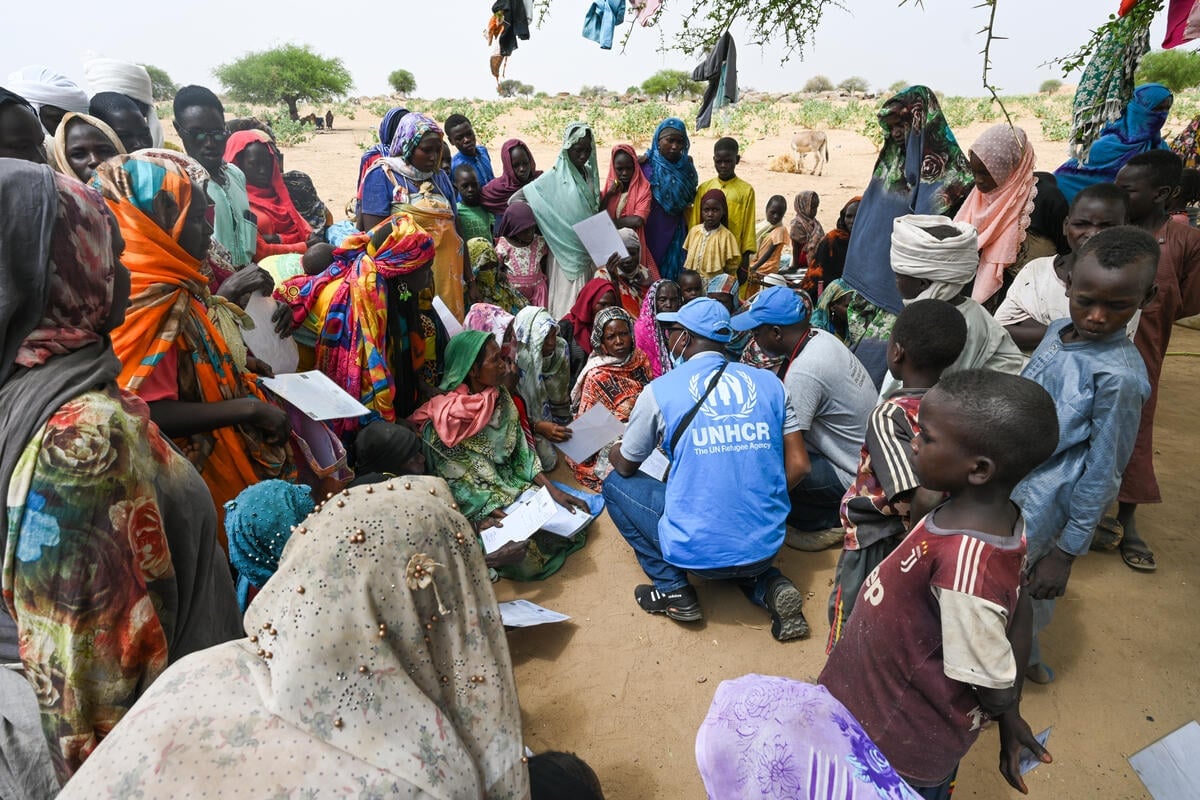One year on, Somali exodus continues amid conflict and poor rains
One year on, Somali exodus continues amid conflict and poor rains
A year ago this June, desperate Somali refugees began pouring into neighbouring countries, driven from their homes by conflict, human rights abuses and the worst drought in decades. This latest chapter has been another stark reminder of the Somali population's tragic and prolonged suffering spanning more than twenty years.
Facing violence and starvation, tens of thousands sought survival in refugee camps in the region. Most walked through the desert for days, weeks at times and would arrive exhausted, sick and emaciated, often carrying their weak and dying children or the few belongings they had.
Today, many challenges remain. Continuing conflict and poor seasonal rains are still forcing people to flee their country although at lower levels than we saw last summer. In the first four months of 2012 some 20,000 Somalis sought refuge in neighbouring Kenya, Ethiopia, Djibouti and Yemen (on average 40,000 Somalis fled their homeland each month between June and September of 2011).
This May, the Dollo Ado camps in Ethiopia, which were already hosting more than 150,000 refugees, saw a significant increase in new arrivals, from less than 980 in the first half of May to more than 2,000 in the second half. The newcomers say they are fleeing increased physical insecurity and dwindling food resources. Specifically, they cite fear of being caught in military operations, forced recruitment, poor rains, and crop destruction by caterpillars as reasons for leaving Somalia. We are working with the Ethiopian authorities to identify a site for a sixth camp in this already crowded and environmentally fragile area.
Meanwhile, at Dadaab in Kenya, more than 460,000 refugees continue to live in a precarious security environment. The threat of improvised explosive devices, shootings, kidnapping and banditry remains high. Deliveries of assistance and activities in the camps are continuing regardless. In Dadaab we have also witnessed acts of incredible solidarity during the emergency. Refugees who have lived there for years and the host community generously assisted the new arrivals and shared whatever resources they had.
Throughout the past year the priority and toughest challenge for UNHCR and its partners has been to reduce the unprecedented mortality and malnutrition rates among Somali arrivals.
Despite life-saving medical care and therapeutic feeding programmes in the Dadaab and Dollo Ado refugee camps, many of the newly arriving children have been beyond help - dying within hours or days of arrival. At the peak of the influx last summer, the estimated death toll was as high as 17 deaths per 10,000 people every day.
At the onset of the crisis UNHCR and its partners set up critical nutrition programmes in reception and transit centres and in the camps. Combined with mass vaccinations and other public health measures, these massive efforts saved lives over the past 12 months. Mortality and malnutrition rates began to drop from record highs in September last year, but it took another six months before they fell below the levels usually seen in an emergency (i.e., less than 1 per 10,000 per day). Today, Ethiopia's Dollo Ado camps are reporting an average crude mortality rate of 0.8 per 1,000 per month and an under-five mortality rate of 2.2 per 1,000 per month. In Kenya's Dadaab refugee complex the crude mortality rate is 0.2 per 1,000 per month, and 0.6 per 1,000 per month for children under five years of age.
Another vital achievement has been the reduction in the high malnutrition rates unseen in decades. Malnutrition was especially alarming among refugee children - in June and July last year more than half of Somali children arriving in Ethiopia were acutely malnourished. That rate was somewhat lower among those arriving in Kenya, but equally disturbing - between 30 and 40 per cent. Even the most experienced UNHCR staff said they had not seen anything like it since the 1998 famine in southern Sudan or the 1999 nutrition crisis in Brazzaville.
The results of the most recent mass screenings show a sharp reduction of malnutrition among under-fives in Dadaab (seven per cent). In Dollo Ado, the malnutrition levels among children also stabilized with all camps showing a positive trend. In the older Melkadida and Bokolomayo camps, acute malnutrition rates have fallen to 15 per cent. UNHCR is currently preparing a follow-up survey in the newer Kobe and Hilaweyn camps and we expect to see significantly reduced levels of general acute malnutrition.
Massive water, sanitation and hygiene programmes went hand-in-hand with these efforts and were integral to the vast improvements in the health conditions of the Somali refugee population.
The neighbouring countries have been bearing the brunt of the Somali displacement throughout the latest emergency in the Horn of Africa. Pressure is huge on the host communities as the Somali crisis continues to affect the entire region. They need continued international support.
Some 300,000 people fled Somalia last year alone. Today, more than 980,000 Somalis live as refugees in neighbouring Kenya, Ethiopia, Yemen and Djibouti.
For more information on this topic, please contact:
- In Nairobi, Somalia office, Andreas Needham,on mobile: +254 733 120 931
- In Nairobi, Regional Support Hub, Vivian Tan on mobile: +254 735 337 608
- In Geneva: Andrej Mahecic on mobile +41 79 200 7617









